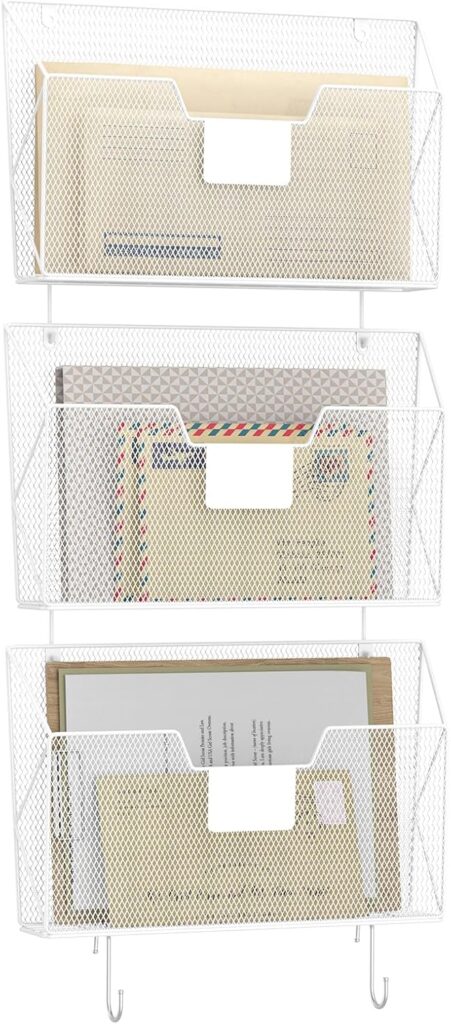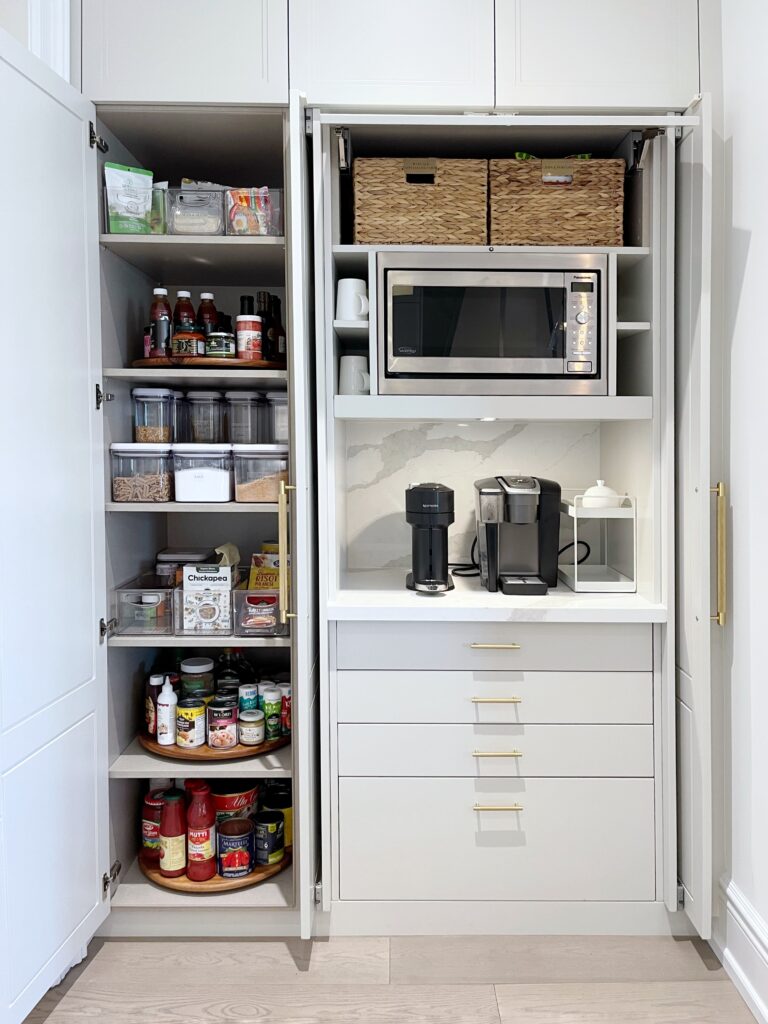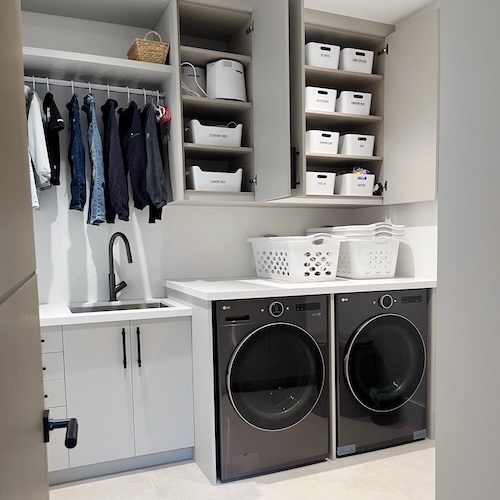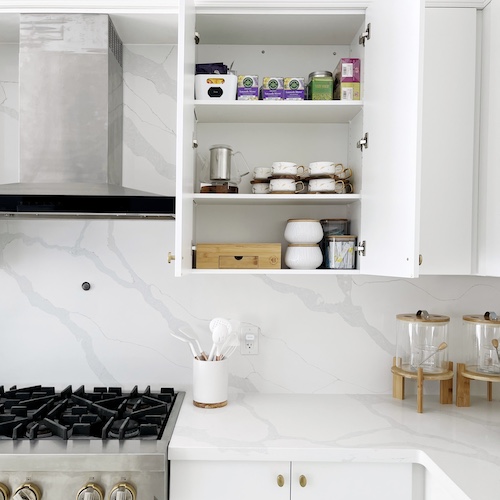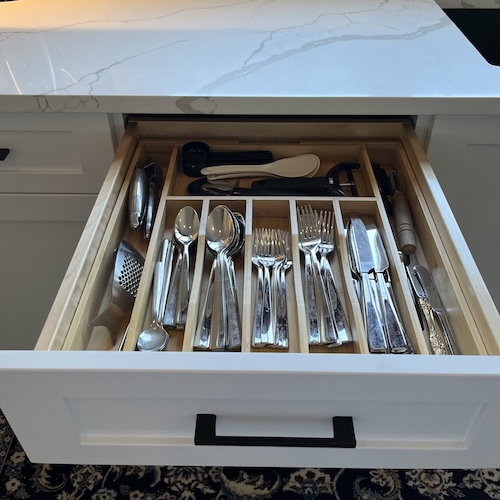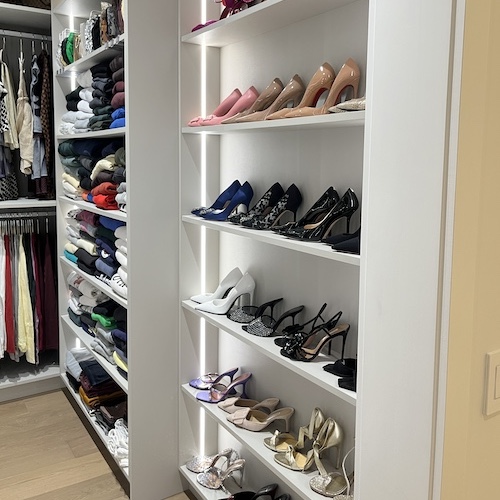Ah, the back to school season! Suddenly, your house transforms into a whirlwind of backpacks, lunch boxes, and stray socks. You probably find yourself asking, “How on earth do I keep this place from turning into a disaster zone?”
Don’t worry; you’re not alone! Every parent knows the struggle of trying to keep a home organized when the school year starts. But here’s the good news: with a little planning, you can transform your home into a well-oiled machine.
In this article, you’ll learn how to set up key areas of your home to avoid the school-year clutter. We’ll tackle the mudroom, the kitchen lunch area, closet, and the all-important study zone. By the end, you’ll be ready to face the school year with confidence—and maybe even a little bit of sanity left intact.
Back to School Mudroom: The First Line of Defence
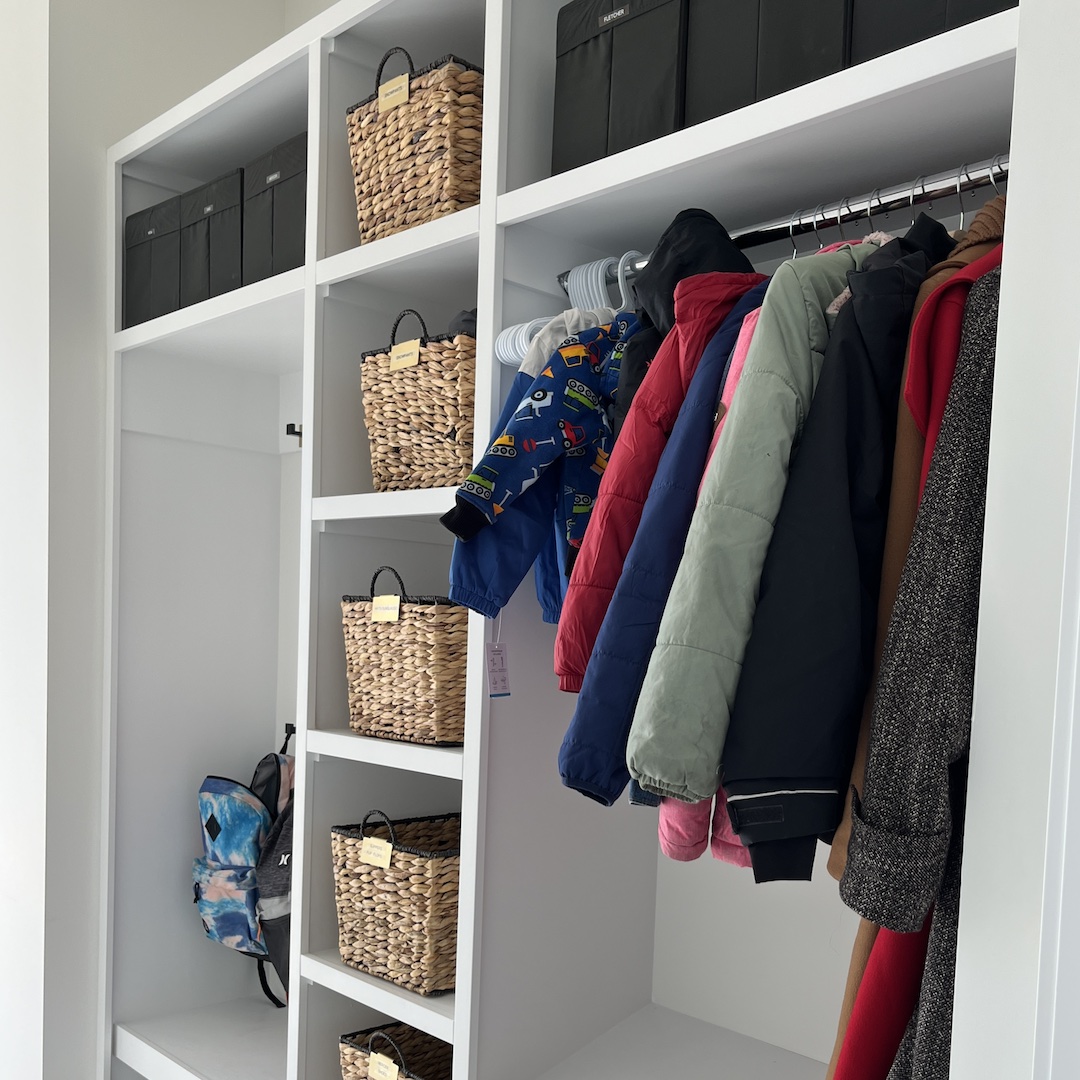
Picture this: It’s a Monday morning, everyone’s running late, and the mudroom looks like a shoe shop exploded. There are coats on the floor, mismatched gloves everywhere, and you’re pretty sure there’s a soccer ball hiding under that pile of backpacks. Sound familiar? The mudroom can either be your best friend or your worst enemy when it comes to keeping your home organized during the school year. But fear not! With a few clever tricks, you can turn this chaotic space into a clutter-free zone that’ll make you feel like you’ve got this whole “parenting” thing under control.
Organizing Systems for Your Mudroom
- Set up a place for backpacks. Add hooks for backpacks on kids hight level, so they can hang and grab it themselves.
- Limit the amount of shoes. Remove all out of season shoes and leave only those that are regularly worn (for most families it’s 3 pairs of shoes per child).
- Create a drop zone: Designate a bin for each child. This way, your kids can grab what they need on the way out the door and (hopefully) put it back when they get home.
- Sport activities: Oftentimes kids have huge bags with their after school activities, especially if they do hockey (those bags are ginormous). Most people’s mudrooms are too small for all those duffle bags, so create a zone in your garage, by adding shelves unit.
Tips for Maintaining Organization Throughout the School Year
You’ve set up your mudroom—congrats! Now, how do you keep it from becoming a disaster zone again? Here’s the secret: regular maintenance.
- Daily Routine: Make it a rule that everyone hangs up their coat and puts away their shoes as soon as they come in. (Yes, it might take some reminding. And yes, bribery is totally acceptable.)
- Weekly Check-In: Take a few minutes each week to straighten things up. Put away any stray items, give the floor a quick sweep, and make sure everything is where it belongs.
- Seasonal Swap-Out: As the weather changes, swap out seasonal gear. Store summer jackets and shoes elsewhere in the winter, and bring them back when the heat hits. This keeps the mudroom from getting overcrowded.
By following these steps, your mudroom will become a organized haven rather than a cluttered chaos zone. Next up, we’ll tackle the kitchen, where we’ll create a lunch station so efficient, your kids might actually stop saying “Mum, where’s my lunch?” (Maybe).
Back to School Kitchen: Making Meal Prep a Breeze
Let’s face it, school mornings are like a high-speed race, and the kitchen is the starting line. Between making breakfast, packing lunches, and trying to remember where you put the car keys, it’s easy for things to get chaotic. But with a little bit of organization, you can transform your kitchen into a streamlined lunch-prep station that’ll save you time and maybe even a few grey hairs.
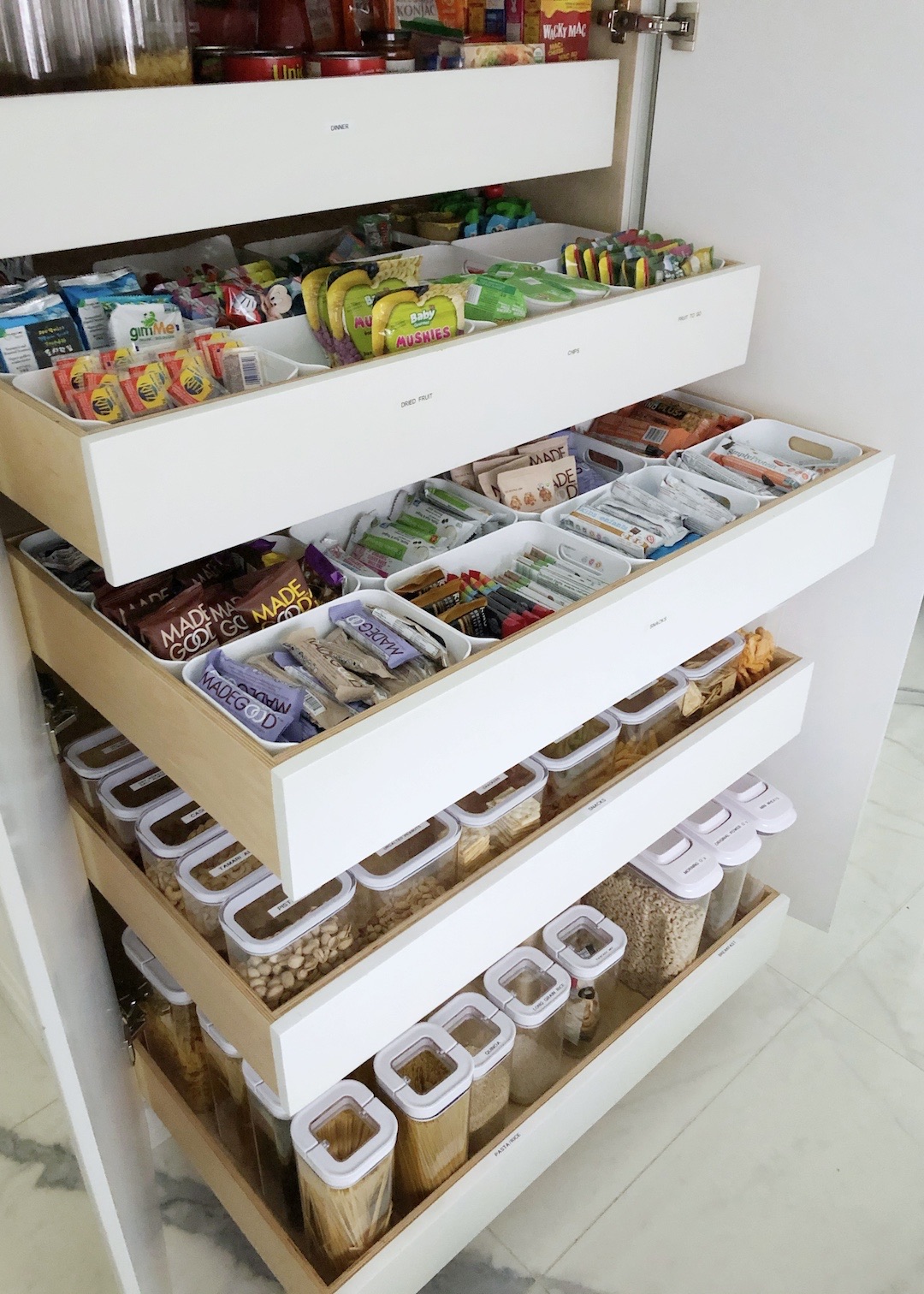
Setting Up a Lunch Station
First things first—create a dedicated space in your kitchen where all things lunch-related live. This way, you’re not running around like a headless chicken trying to gather everything while the kids are bickering over cereal. Here are some ideas to get you started:
1. Snack Central: Designate one shelf or drawer for all the lunchbox snacks. Use baskets to group similar items together (think crisps, granola bars, fruit snacks, etc.). This not only makes it easier for you to pack lunches but also lets the kids grab their own snacks without tearing through the pantry like a tornado.
2. Lunch Bag Parking: Set up a specific spot for lunch bags. This keeps them from getting lost in the abyss of your kitchen and makes it easy for the kids to pack their lunch themselves.
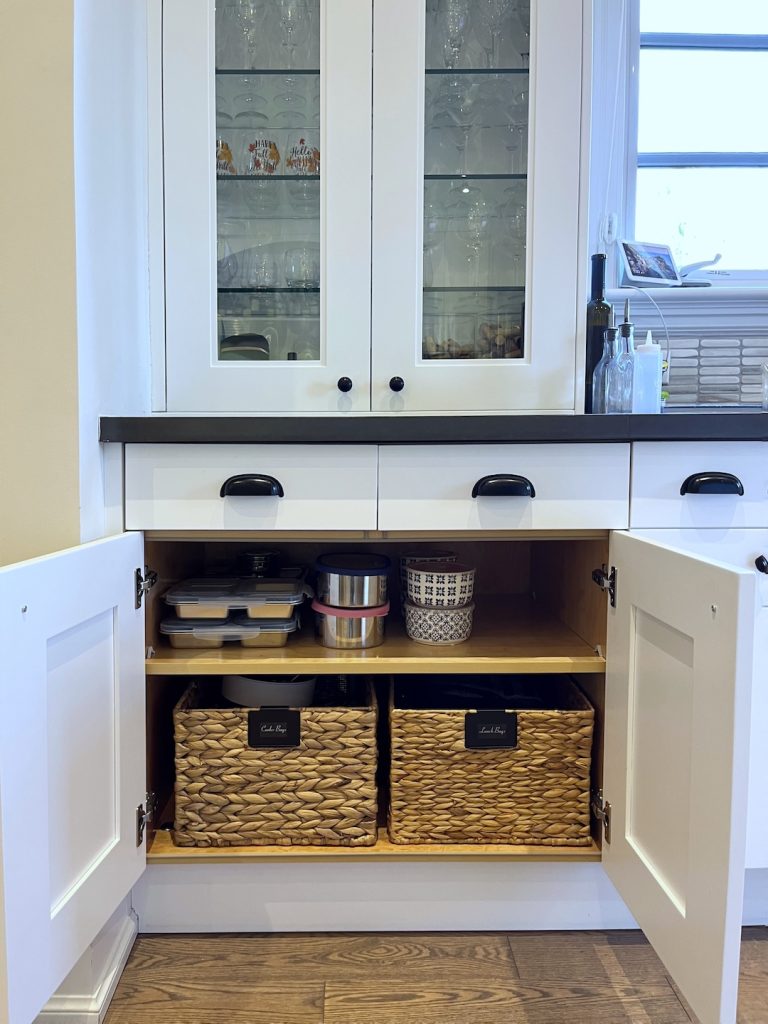
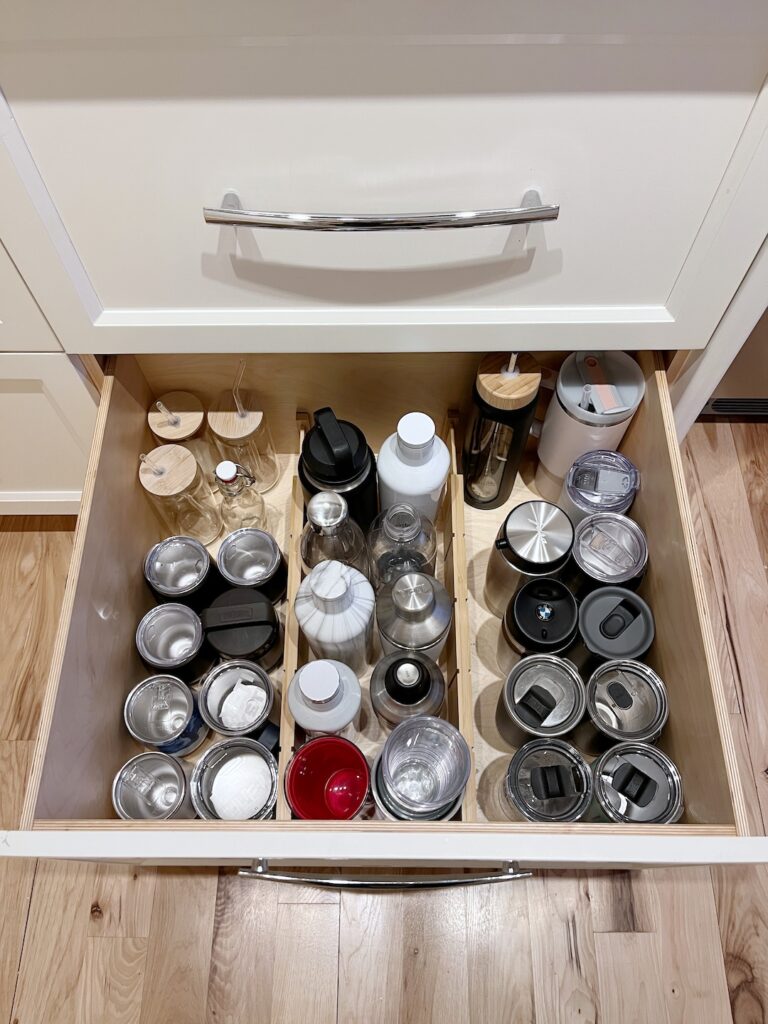
3. Fridge Lunch Packing: Designate one shelf in your fridge where kids can reach for yogurt, cheese and other snacks that need to be in the fridge. On the same shelf place an acrylic bin for premade sandwiches from night before. It’s a great way to encourage kids to start packing their own lunches (because independence is the goal, right?).
4. Water Bottle Station: Keep water bottles together in one spot, either in a bottom cabinet or drawer so it’s easy for the kids to fill up their bottles themselves before heading out. No more last-minute dashes around the house looking for that missing bottle!
Encouraging Kids to Take Responsibility
Now that your lunch area is all set up, it’s time to get the kids involved. After all, the more they can do on their own, the smoother your mornings will be.
- Let Them Choose: Give your kids some ownership by letting them choose their snacks from the designated snack zone. You can set guidelines (e.g., one healthy snack and one treat), but giving them the power to pick makes them more likely to eat what’s packed.
- Teach the Routine: Show your kids how to use the lunch station—where everything is, how to pack their own lunch, and where to put things when they’re done. It might take a few reminders (and some patience), but eventually, they’ll get the hang of it.
- Set Expectations: Make it clear that part of their morning routine includes grabbing their lunch and water bottle from the designated spots. This not only helps you out but also teaches them responsibility and organization skills.
With these systems in place, your kitchen will go from chaotic to calm in no time. And who knows, you might even have a few extra minutes in the morning to sip your coffee while it’s still hot. Next up, we’ll dive into creating the perfect study zone to help your kids stay focused and on top of their schoolwork.
Create the Perfect Study Zone
A well-organized study zone is essential for your kids to succeed academically and for your sanity as a parent. Here are four key systems to set up to ensure that your home is ready for the school year:
The Paper Dump Zone: Taming the Paper Monster
If there’s one thing that schools excel at (besides teaching, of course), it’s sending home a never-ending stream of papers. From artwork to report cards to random worksheets, the paper clutter can quickly overwhelm your home if you don’t have a system in place.
- Designate a Paper Dump Bin: Set up a large bin in a convenient spot where all school papers go the minute your kids walk through the door. This could be in the mudroom, basement, their room or wherever you have space. The idea is simple: all the papers go into the bin throughout the year, no sorting required.
- Year-End Sorting: Here’s the genius part—don’t worry about sorting anything until the end of the school year. When June rolls around, sit down with that bin and sort through it in one go. You’ll find it easier to let go of things like old test papers and worksheets when they’re no longer relevant. Trust me, no one is going to want to dig out that spelling test from September three years from now. Keep a few meaningful pieces (think art projects or standout assignments) and recycle the rest.
- Empower Older Kids: For older children, teach them to manage their own paperwork. Encourage them to go through their papers regularly and decide what to keep and what to toss. This not only keeps their space tidy but also helps them develop critical organizational skills.
Homework Stations: Keeping the Kitchen Table Clear
Let’s be honest: the kitchen table often doubles as a homework station, craft zone, and snack bar all rolled into one. To prevent it from turning into a cluttered mess, setting up a system is key.
- Kitchen Homework Station for Younger Kids: For younger children who need supervision during homework, keep things simple by dedicating one deep drawer or cabinet in the kitchen as their homework supply zone. Store all the essentials—pencils, crayons, glue, scissors, you name it—in a basket or container. When it’s homework time, everything they need is in one place, and when they’re done, it all goes back in the drawer. This keeps the kitchen table clear for meals and other activities.
- Study Space for Older Kids: Older kids need a quiet, focused environment to get their work done. Set up a dedicated homework station in their bedroom or a study area with a desk, comfortable chair, and adequate lighting. Make sure there’s enough storage for school supplies and textbooks, so everything has a place. The simpler the setup, the easier it will be for them to keep it tidy.
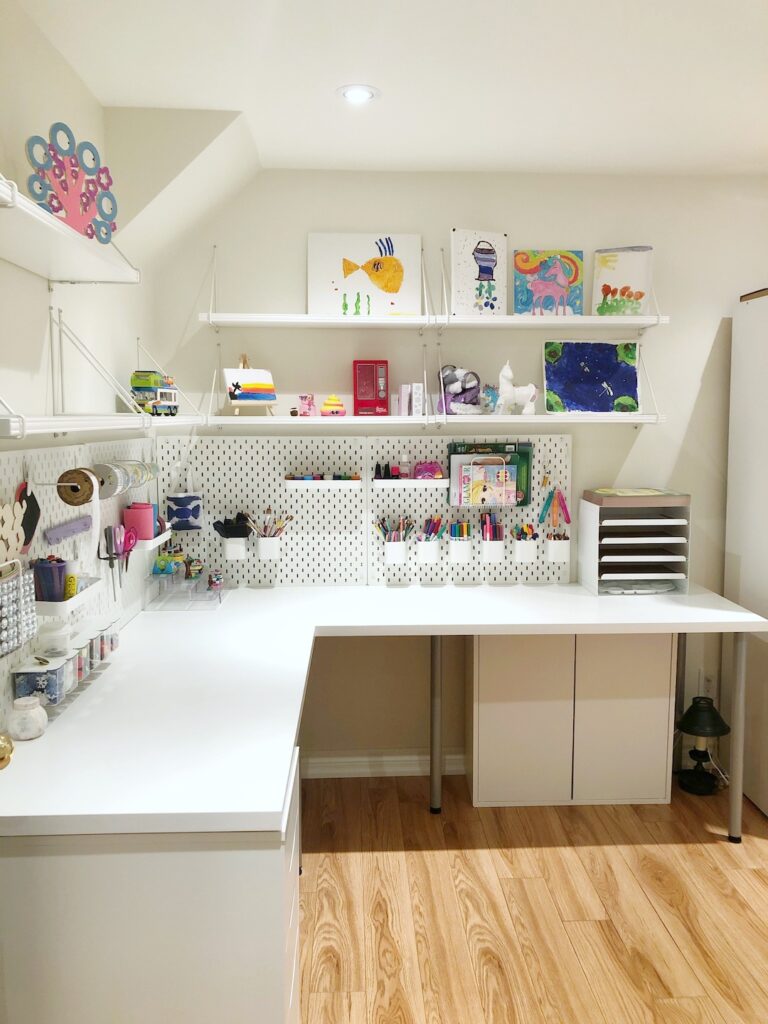
The Command Centre: Your Hub for Schedules, Signatures, and Library Books
Life with school-aged kids means you’re constantly juggling forms that need signing, library books that need returning, and schedules that need tracking. Without a centralized system, it’s easy to lose track of it all. That’s where the Command Centre comes in. We like to use wall baskets from Amazon.
- A “To Sign” Section: You can add here any forms or papers that need your attention. This way, you won’t be scrambling to find that permission slip the morning it’s due.
- Schedule Station: Set up a section to keep track of school schedules, extracurricular activities. Having a visual reminder helps everyone stay on top of what’s coming up and ensures nothing gets forgotten.
- Library Book Station: Ensuring they have a consistent place to live until they’re returned. This simple setup makes it easy to keep track of borrowed books and prevents the frantic search on due dates.
- Visual Organization Tools: Use a whiteboard, chalkboard, or even a simple wall calendar to display weekly schedules and tasks. This keeps everyone in the loop and helps avoid those last-minute panics over forgotten assignments or overdue library books.
Back to School Closet: Streamlining Mornings
A well-organized closet can be the difference between a smooth morning and a frantic one. By setting up simple systems in your kids’ closets, you can make getting dressed a breeze, reduce the stress of last-minute outfit decisions, and keep their wardrobes tidy all year round. Here are three game-changing strategies to implement.
Divide and Conquer: School Uniforms vs. Casual Clothes
First things first—let’s tackle the great wardrobe divide. If your kids wear school uniforms, mixing them with their casual clothes can lead to chaos (and the occasional mismatched outfit). The solution? Create separate sections in their closet for school uniforms and casual wear.
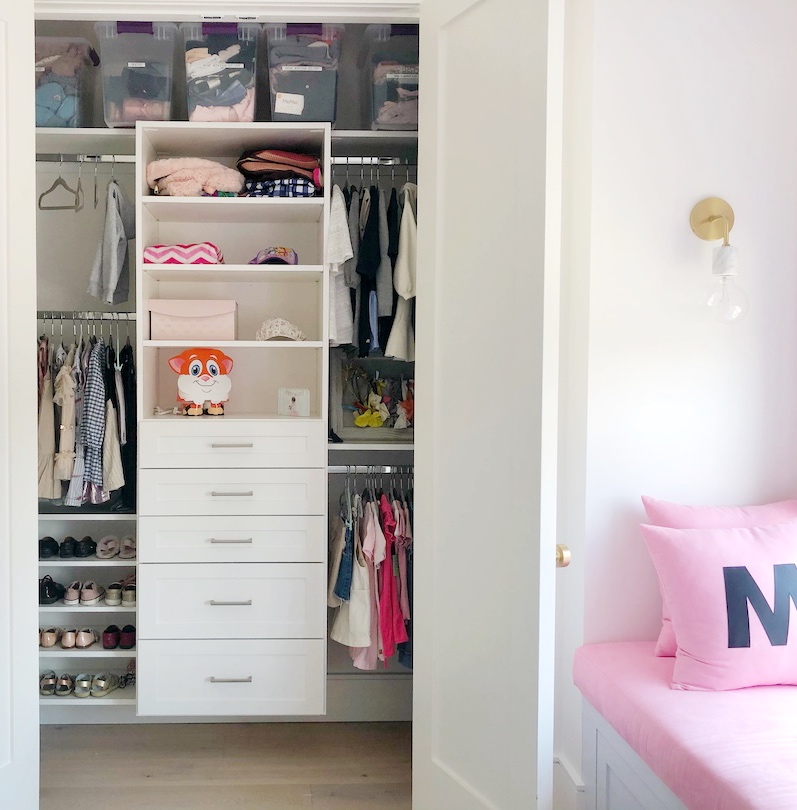
- Uniform Section: Dedicate one side or a specific section of the closet exclusively to school uniforms. Use hangers or hooks to keep everything easily accessible, and consider adding a shelf or basket for accessories like ties, belts, or school socks. This way, when your child is getting ready in the morning, there’s no confusion about what to wear—they can simply grab from the uniform section and go.
- Casual Clothes: Keep casual clothes in their own section, whether it’s on the opposite side of the closet or in designated drawers. This makes it easy for your kids to find their favourite weekend outfits without rummaging through school gear, keeping everything neatly in its place.
- Lay Out Clothes for the Week for Young Kids: Use hanging closet shelves to organize outfits for each day of the week. You can place the complete outfit—including socks and any accessories—into the designated spot for each day. This not only simplifies your mornings but also gives your kids a sense of independence as they can easily grab their clothes and get dressed on their own.
The Closet Donation Bin: Decluttering Made Easy
Kids grow fast, and their closets can quickly become overrun with clothes that no longer fit. Instead of letting too-small outfits take up valuable space, set up a donation bin directly in your child’s closet.
- Easy Access: Place a basket in the closet where your kids can easily drop in clothes they’ve outgrown. This way, when they try something on and it doesn’t fit, they can immediately place it in the donation bin, keeping their closet clutter-free.
- Regular Donations: Once the bin is full, make it a family activity to sort through the items and decide where to donate them. Not only does this keep your child’s wardrobe organized, but it also teaches them about giving back and making room for new clothes they’ll actually wear.
By dividing the closet into sections for uniforms and casual clothes, planning outfits for the week, and adding a donation bin for outgrown items, you’ll transform your child’s closet into a well-organized space that makes mornings easier and keeps clutter at bay. These simple systems will help ensure your child’s wardrobe stays functional and tidy all year round.
The start of a new school year doesn’t have to mean the start of chaos in your home. From organizing your mudroom to creating a dedicated lunch station, setting up effective study zones, and streamlining closet organization, each of these small changes adds up to a more functional, stress-free home.
By implementing these ideas, you’ll not only reduce clutter and save time, but you’ll also foster a sense of responsibility in your kids as they learn to take charge of their own space. The beauty of these systems is that they’re designed to be simple and sustainable, ensuring they’ll keep your home running smoothly throughout the entire school year. So go ahead—set up those hooks, baskets, and command centre, and get ready to face back-to-school season with confidence, organization, and maybe even a little extra peace of mind.

